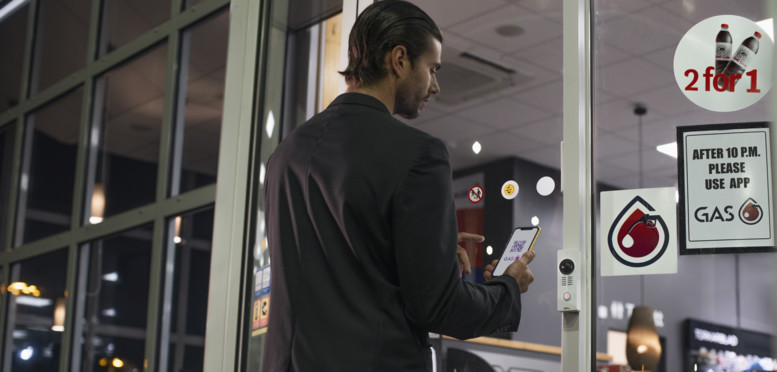Managing multi-store retail with a centralized surveillance system
From network video to audio solutions, the use of surveillance technology can help retailers optimize their business and in doing so unlock its full potential.
Network video solutions enable you to collect and more accurately reflect customer behavioural data (e.g., knowing the number of people who enter the store, and how they navigate the shop floor). These solutions not only keep staff and property safe, but also monitor traffic, queue lengths, and occupancy levels in addition to staff and customer behavior – all within the same system per store. It’s therefore no surprise that any large retailer with multiple stores across different regions will face challenges when it comes to managing myriad technology solutions and data points from different sources.
Centralization helps solve a number of challenges that come with managing multiple applications and vendors. It shifts operations to a single place and provides a comprehensive view of the various security equipment across your business. Regardless of location, retailers are expected to ensure all security equipment devices are properly installed, security protocols followed, and identify products which are reaching end of life. Without a centralized approach, coordinating this activity will require a great deal of time and effort.
Retail centralization is not a new concept for the industry. However, there is less awareness of how digital and data-driven retail makes it easier for retailers to achieve an optimal centralized approach. Through the support of innovative technology, having a centralized view of your operations provides a single source of truth for your network video surveillance system. It also saves time, improves transparency of processes and enhances operational efficiency.
The value of conformance for a centralized system
While in some cases there may be challenges to standardization – for example, due to cultural and regulatory differences – it’s also important to consider that there are valuable advantages to having policies that all stores must conform to.
Having consistent policies can support with the centralized management of devices and equipment. This includes authorized verification, loss prevention, forensic purposes and compliance. For instance,
- Access Control: An unmanned store in London allows customers access through their membership ID, which is sent and stored in a central database located in the headquarters. However, if the same membership ID is used to access the store in another location, like Manchester, within an unreasonable time frame (i.e., within 30 minutes or simultaneously), the system will trigger an alert to notify of potential fraud. The system can also be utilized in a 24-hour gym chain in response to the same membership ID being used to access a different gym within an unreasonable time frame or at the same time.
- Loss prevention: A man with a white shirt, blue jeans, and a heart-shaped tattoo on his arm was caught shoplifting in a convenience store. Smart search can identify the individual using particular attributes, such as by clothing colors and any visible tattoos. The system will then easily locate all the relevant footage for forensic purposes. It could alert the store manager to pay attention if someone fitting these attributes is recognized.
- Audio: In a supermarket chain, background music (BGM) and promotions are carefully managed to avoid any royalty issues. To ensure only licensed media is played in the store, all BGM media is stored in a centralized audio system at headquarters and circulated to the stores. Additionally, when a supermarket chain wants to broadcast a promotion across all of their supermarkets simultaneously, they can utilize that centralized audio system to broadcast the message at the same time. This ensures that the promotion is heard by all customers, regardless of which store they are in.
Shared standards across stores can also be the best practice for quality assurance. By having clear measures for what is acceptable throughout the franchise, you can ensure your desired level of performance is met in every store. Again, monitoring that the quality of surveillance is consistent throughout your business can be managed in a centralized system.
Manageability and transparency across the business
To keep on top of managing multiple stores there are a number of factors to consider – How to improve the manageability of people movements, changes to existing technology, and the ability to perform data analysis to name a few.
Centralization is crucial to enabling effective management and transparency of the business. This can be implemented in the following ways:
- Technology partnerships: Managing multiple stores can also mean managing multiple technology vendors. Standardization and centralization ensure that regardless of the different vendors, all implementation work is carried out according to the standard and can be verified by the system. This can include checking that all the technology solutions utilized are compliant with relevant regulation, such as the UK Surveillance Camera Code of Practice. Using a standardized approach here also enables an end-to-end partnership for your business.
- Data collection: Centralization enables all surveillance technology to be monitored in a single place. For instance, UK retail business, Nisa used real-time video data collected across their franchise to make decisions about buying, forecasting, and optimizing the positioning of goods within a store.
- Innovation: Centralization helps you keep up with new technology, processes or incoming trends that impact the retail industry, by providing a clear layout of what’s already in place and what needs updating. For example, to reduce instances of non-scans at self-checkouts, video analytics can be installed. Once a non-scanned product is detected, an audio messaged can be triggered to inform the customer.
Having consistent operations and centralized data supports you in identifying best practices, collating data insights from successful stores, and monitoring whether current processes are meeting customer expectations. Partnering with an open platform solution will enable the flexibility and scalability needed to adapt where necessary.
Advancing the retail experience
As the retail industry continues to adopt more surveillance technology to improve operations, taking a centralized and standardized approach will be beneficial to managing this. Standardization helps set your business up for centralizing your security systems, by providing conformity it enables simplified monitoring across different stores.
Visibility of multiple applications and vendors across stores, enables the transparency needed for not only forensic investigations, but also to gather critical data to inform your business decisions. When increasing efficiencies across your wider business, a centralized approach will play a key role in sustaining future growth.
Master multi-store management:


